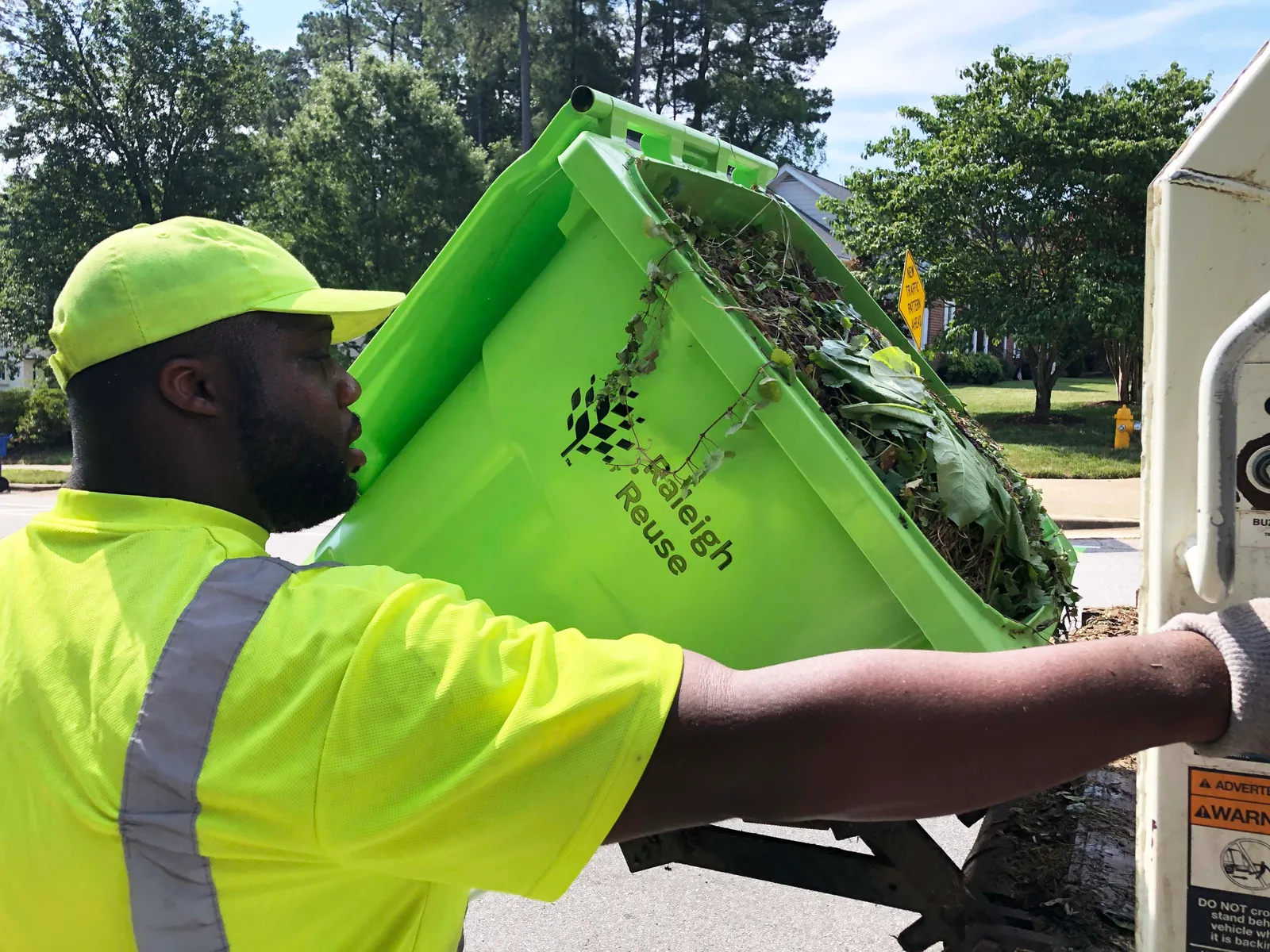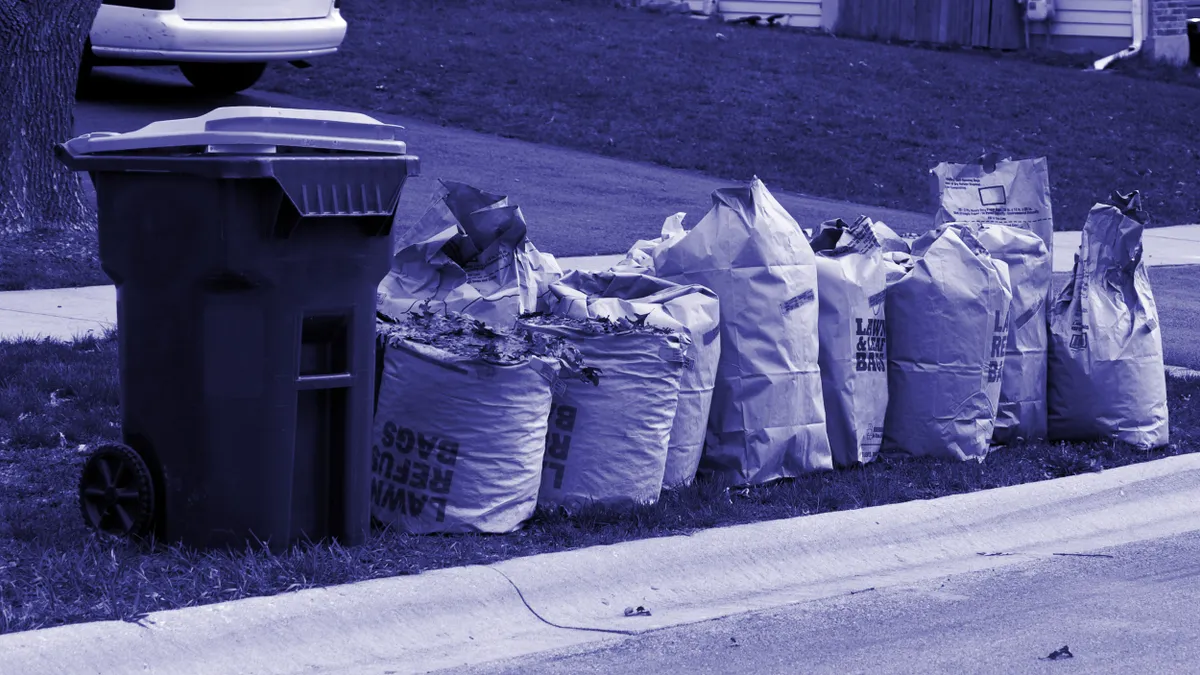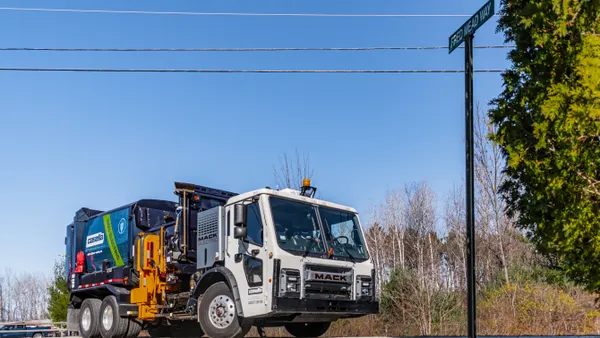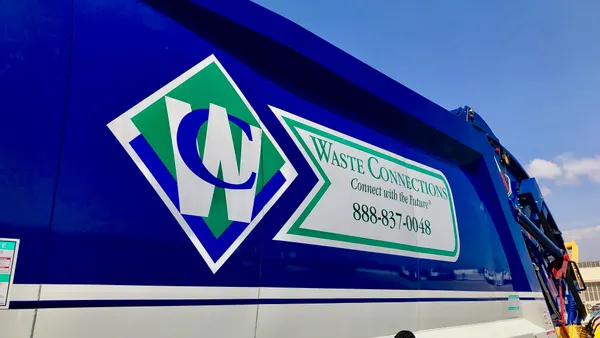City Haul is Waste Dive’s ongoing series examining the people and issues shaping municipal waste and recycling across the U.S. Have a tip or an angle about city-run operations that you think should be part of the conversation? Please reach out to mrachal@industrydive.com.
When collection resources are limited, yard waste services are sometimes first on the chopping block. Pandemic and labor-related constraints have prompted delays or suspensions for many municipal operations when they face challenges keeping day-to-day services running smoothly. And the yard waste stream is seasonal, weather-dependent and variable by nature.
“The pandemic taught us about the way that we were providing our yard waste service. It's a hands-on service. It's very intensive. There's some additional touch points there,” said Sadel Lassiter, assistant director of administration in the city of Raleigh, North Carolina’s Solid Waste Services Department.
While yard waste might make up a smaller portion of the waste stream, when cities disrupt yard waste service they lose the opportunity to divert around 12% of MSW, which the U.S. EPA estimated totaled 35.4 million tons in 2018.
Organic material, if landfilled, can result in particularly potent greenhouse gas emissions. But yard waste can also be one opportunity for quick circularity, when turned into compost or mulch that residents can get at no added cost. There was a 63% composting rate for yard trimmings or wood waste in 2018, which did not factor in backyard composting or material recovered for direct disposal. Close to half of states have disposal bans on grass and/or leaves.
Raleigh, along with South Bend, Indiana; Omaha, Nebraska; and the District of Columbia are among the U.S. cities that have re-evaluated aspects of their yard waste programs in recent years.
Maximizing clean material
For some municipalities, implementing carts or even just requiring paper bags has increased capacity and cut back on plastic bag contamination. And every change to a program is an opportunity to re-educate the public on all types of proper diversion, leaders say.
Raleigh this summer refreshed its yard waste program, rolling out bright green carts to customers for year-round service. The city touted benefits to customers, including a “more reliable” biweekly pickup schedule, lower carbon emissions thanks to fewer truck trips, and the opportunity to create more products like mulch and compost for the city’s yard waste center.
Raleigh was among the municipalities that suspended curbside yard waste service at the beginning of the pandemic. Lassiter said that observations during the pandemic shaped the program’s format today, and the city council was supportive of the changes, particularly as municipalities in the North Carolina area trended toward carts.
“We had to go to biweekly service during the pandemic in order to continue providing that service to residents. So we saw that the service was more reliable,” Lassiter said, adding that “in the event that something like this happened again, it would be less likely for us to have to suspend our services because it's not as labor intensive using the carts as it was previously.”
The carts have also made it less likely for customers to use plastic bags and introduce that category of contamination into yard waste products, she said. But the downside of carts for yard waste? It’s harder to eyeball other forms contamination. “Just teaching them how to use it, teaching them how to further their yard waste has been an ongoing challenge,” Lassiter said.
As for public messaging, Raleigh’s Solid Waste Services Department is striving to link people’s understanding of proper yard waste collection and environmental impact. “So we draw the connection and say ‘hey, we need you to be very careful with your yard waste pickup because in doing so, whatever you put in you're going to get back out,’” said communication analyst Maine Johnson.
Today, those end products may be more meaningful to people, Johnson thinks. While Raleigh’s mulch program has been available for a long time, interest in sustainability has broadened and more people are trying to grow gardens, he said.

In South Bend, Indiana, contamination has been the main issue — so much so that the city recently made it someone’s job to operate machinery to remove errant trash at the organics facility where it sends its yard waste.
The city no longer struggles with plastic bag contamination, but like Raleigh has found that the downside of more efficient automated side loader trucks and carts is a lack of visibility into what residents set out. Contamination doesn’t just diminish end products — it threatens the city’s ability to operate the program.
Last year the city pulled out 900,000 pounds of trash from yard waste, equal to about 10% of the volume of yard waste it brings in annually, said Eric Horvath, the city’s executive director of public works. Over the past few years, the city has tried to mitigate contamination at the source through ‘oops’ tags and the like, but impact has been limited.
Contamination at the Organics Resources Facility resulted in a notice of violation from state environmental regulators. To continue to be able to take yard waste to the facility, the city opted to hire a person to work as a garbage sifter, budgeted at a little over $36,000 for 2023. It’s a small price to pay to continue a program that’s otherwise working pretty well, Horvath said.
South Bend will continue education efforts but also updated the city ordinance allowing it to penalize violators; it’s tripled fines for contaminators, Horvath said. For now, he expects the back-end sifting role will be in place for a while, though ideally not permanently.
“If we could get the trash out of the yard waste at the source, this could go from being a really good program to be an outstanding program, because it just makes it that much easier for us and then we don't have the issues where we're worried about violating our permit,” Horvath said. “That's no fun for anyone to sift through a mound of garbage pulling stuff out so we can try to separate it from the stuff that we can compost. It just shouldn't have to be done.”
Finding the program structure that’s the right fit
Times of change present the chance to do things differently, and the city of Omaha, Nebraska, took that opportunity a few years ago when its waste contract was set to turn over.
The city’s previous contractor, a WM subsidiary, was collecting unlimited yard waste for approximately 35 weeks between April and November, and was mandated by the state to not landfill yard waste during those months, explained James Kee, environmental quality control manager in the Omaha Public Works Department’s environmental services division. That contractor struggled with having sufficient staff to maintain service.
Omaha spent three years studying trends in its own program and models regionally and nationally when putting its next request for proposals together. It held pre-solicitation meetings with a range of large national haulers and local providers.
“We looked at it as — we're a municipality, so we're approaching this from a certain perspective. We wanted the contractors’ perspective as well. We wanted to know what they thought worked in other markets and to get their buy-in before we put them on the street,” Kee said.
Since that previous contract, the private landfill where the city sends material installed a gas capture system. The city analyzed the costs and benefits of possible factors like combining yard waste with garbage, the impact of running a truck fleet, and the scope of how landfill gas could power homes.
Ultimately, Omaha began its new contract with FCC Environmental Services in 2020, through which yard waste is primarily collected during six weeks in the fall and six weeks in the spring. The city reported it collected 6,183 tons of yard waste over 12 weeks of seasonal collection in 2021. Outside of the allotted 12 weeks, people can purchase stickers at local stores to put on bags collected at the curb. Kee said that was an important piece that was missing in the previous program: a way to compensate the contractor for extra material.
Kee encouraged others to take the time to closely research and evaluate programs, and then get all-important public buy-in.
“A lot of times staff is going to have to not work their regular 9 to 5; it may be going to a high school gymnasium at 6 o'clock on a Tuesday to go meet with some residents. But you know, take that time to get [out in the community], not just to get input, but also to put some information out there that you've already got in terms of helping to educate the public as to why the change may be coming, and I think you get a little bit more public acceptance that way.”
For the District of Columbia, linking the yard waste program to diversion goals has been a key tactic. The city now has four crews that make anywhere between 100 and 500 stops per day in dedicated yard waste trucks, responding year-round to yard waste pickup requests made via the local 311 call service. So far in fiscal year 2022 (with about a month to go) 470 tons have been collected — about 1.9 tons per day, according to Michael Carter, interim director of the district’s public works department since January. Material is taken to a composting facility in a neighboring county.
Carter says that under the 311 system there have not been cuts or delays in service. While every city is different, Carter recommends the scheduled pickup model.
The district lacks good diversion data to compare to from prior years, but hopes that by going through 311, data collection will be easy and robust going forward as the city tracks progress toward its zero waste goal of diverting 80% of solid waste from disposal by 2032. As PR around the program grows, “We hope that the tonnage increases, perhaps maybe double [the next year].”












